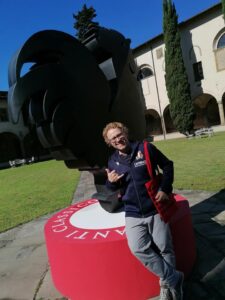The Italian Minister of Culture Gennaro Sangiuliano expressed “satisfaction” with the decision of the Board of Directors of the Italian National Commission for UNESCO to send the candidacy of “The landscape of the Chianti Classico villa-farm system to UNESCO”, for submission to a preliminary evaluation of the advisory bodies for the purposes of inscription on the World Heritage List. “It is a candidacy that enhances an identity landscape of our nation, which has the full support of the Ministry of Culture”, declared Sangiuliano.
The candidacy falls into the category of cultural landscapes and consists of an area that includes seven municipalities distributed across two provinces, Florence and Siena, and which occupies an area of approximately 54 thousand hectares. The proposal represents, through its integrity and beauty, an exceptional testimony to the renewal process which, started in the 16th century, gave rise to a new efficient and sustainable agricultural settlement system. The image of the historic territory is still outlined today by the rhythmic sequence of typologically differentiated buildings, but consistent with the unitary production organization of the villa-farm, by the wise choices of location of the buildings, which allow for a wide intervisibility, and by the continuity of the traditional connections between wooded areas and the areas intended for the main tree crops.
The preliminary evaluation of the advisory bodies of the World Heritage Committee is the first step of the new procedure established by UNESCO for the inscription of sites in the World Heritage List. It optimizes the work of the Convention States, providing an initial assessment of the application dossier and offering observations on which to concentrate efforts during the drafting of the application documentation.
The project, coordinated by the Ministry of Culture through the UNESCO Office of the General Secretariat, was promoted by the Tuscany Region and supported by the Foundation for the Protection of the Chianti Classico Territory. The exchange activities with UNESCO were assisted by the Ministry of Foreign Affairs and International Cooperation.
Source: UNESCO and Gambero Rosso International



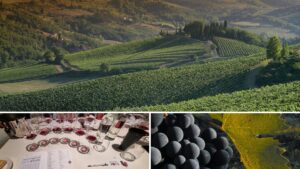


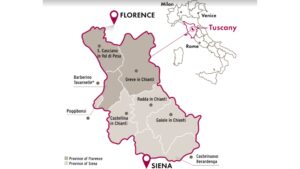
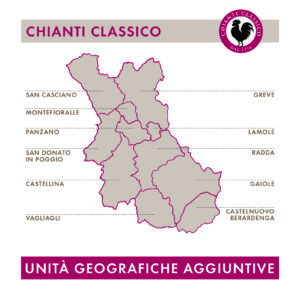
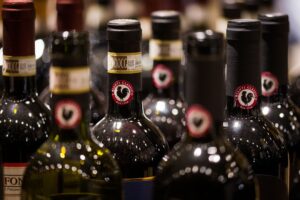

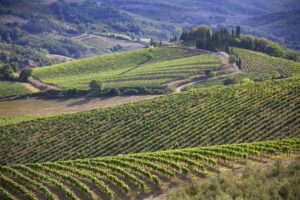 Chianti Classico Collection in 2021 becomes “Chianti Classico Connection”
Chianti Classico Collection in 2021 becomes “Chianti Classico Connection” The “Collection”, this year, was entitled “CC” (Chianti Classico) “Connection”. This global event is synchronized in 5 different countries, including multiple days at the end of May for Chicago, Florence, London and New York and the end of June was reserved for Munich, and Tokyo. In these six important cities, the Black Rooster presented a hybrid format combining an in-person tasting for the sector’s professionals and online interaction with the producers. The Consortium gathered a selected international audience from the wine sector, with the attendance being over 2,800 experts and members of the press, 400 wines being presented with10,000 bottles being tasted.
The “Collection”, this year, was entitled “CC” (Chianti Classico) “Connection”. This global event is synchronized in 5 different countries, including multiple days at the end of May for Chicago, Florence, London and New York and the end of June was reserved for Munich, and Tokyo. In these six important cities, the Black Rooster presented a hybrid format combining an in-person tasting for the sector’s professionals and online interaction with the producers. The Consortium gathered a selected international audience from the wine sector, with the attendance being over 2,800 experts and members of the press, 400 wines being presented with10,000 bottles being tasted.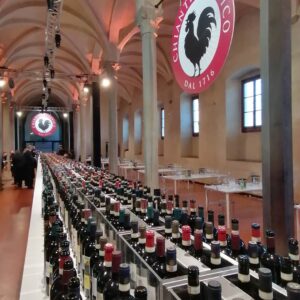 Chianti Classico Moving Forward
Chianti Classico Moving Forward Gran Selezione Regulation Switches Toward Sangiovese
Gran Selezione Regulation Switches Toward Sangiovese Chianti Classico Passport
Chianti Classico Passport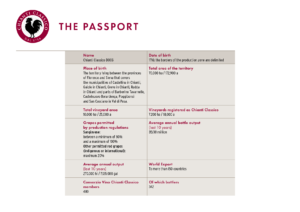
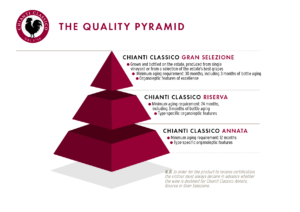 Chianti Classico is offered in three different types that represent its qualitative pyramid:
Chianti Classico is offered in three different types that represent its qualitative pyramid: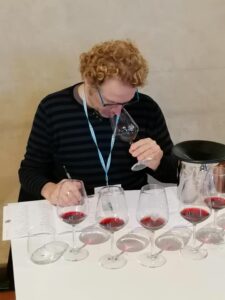 Having spent only one day at Chianti Classico Collection, I have reviewed 162 wines, from Annata Chianti Classico 2019 and 2018, as well as Riserva and Gran Selezione 2018 categories. The Chianti Classico 2019 Annata showed beautiful lively-colored, ripe fruit with great aromatic intensity. An appropriate level of natural acidity guarantees good fragrance. The vast majority of wines I tasted were graceful with slightly lower alcohol content than average previous vintages. The Chianti Classico 2018 Annata, in general, turned out to be soft, fruity with good structure and balance. This is partly a reflection of the vintage which started cool and continued quite rainy through the summer, ending with nice weather during harvest. I found a wide range of great wines, showing high intensity and complexity of aromas in the Riserva and Gran Selezione 2018 categories.
Having spent only one day at Chianti Classico Collection, I have reviewed 162 wines, from Annata Chianti Classico 2019 and 2018, as well as Riserva and Gran Selezione 2018 categories. The Chianti Classico 2019 Annata showed beautiful lively-colored, ripe fruit with great aromatic intensity. An appropriate level of natural acidity guarantees good fragrance. The vast majority of wines I tasted were graceful with slightly lower alcohol content than average previous vintages. The Chianti Classico 2018 Annata, in general, turned out to be soft, fruity with good structure and balance. This is partly a reflection of the vintage which started cool and continued quite rainy through the summer, ending with nice weather during harvest. I found a wide range of great wines, showing high intensity and complexity of aromas in the Riserva and Gran Selezione 2018 categories.